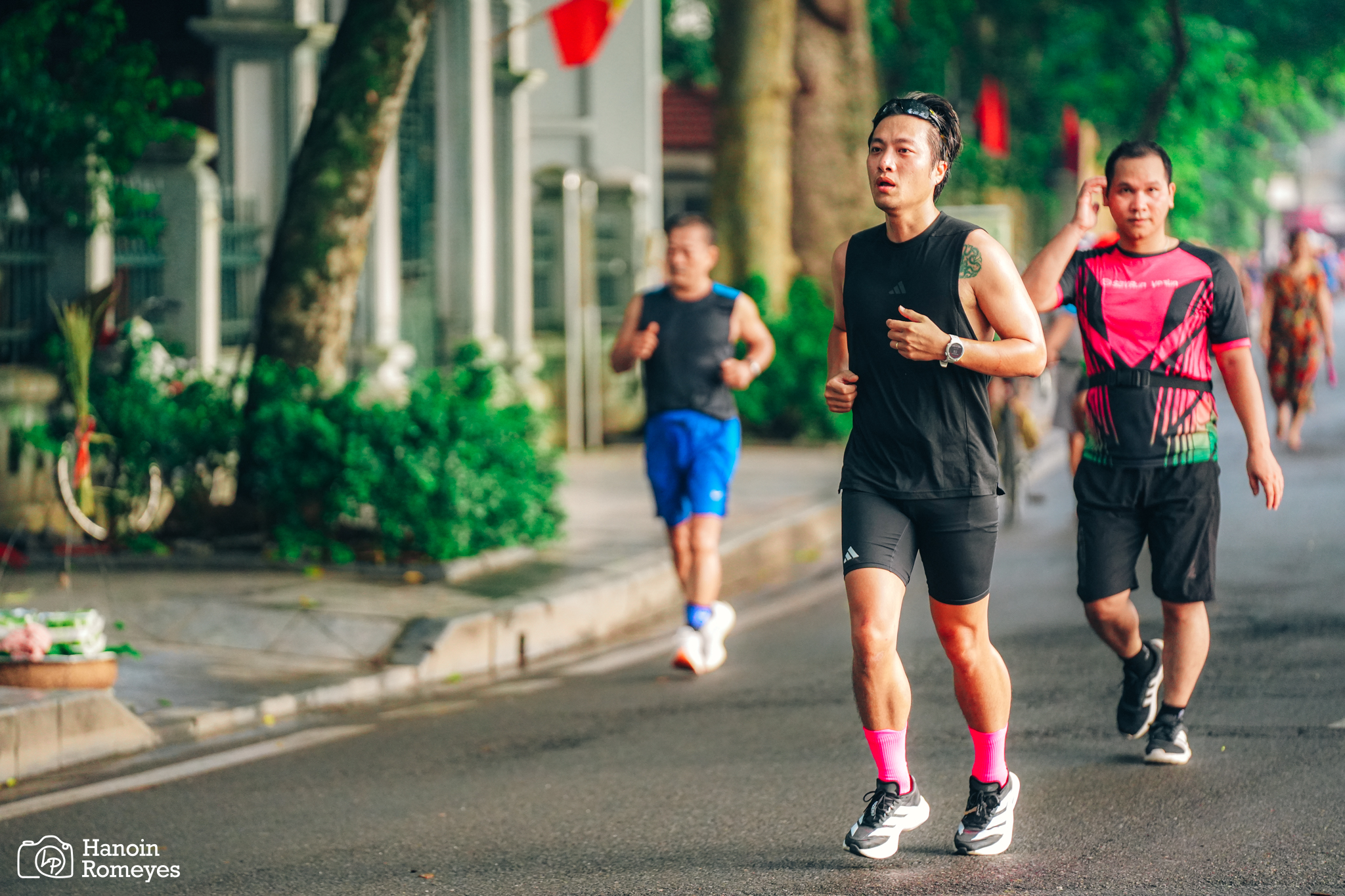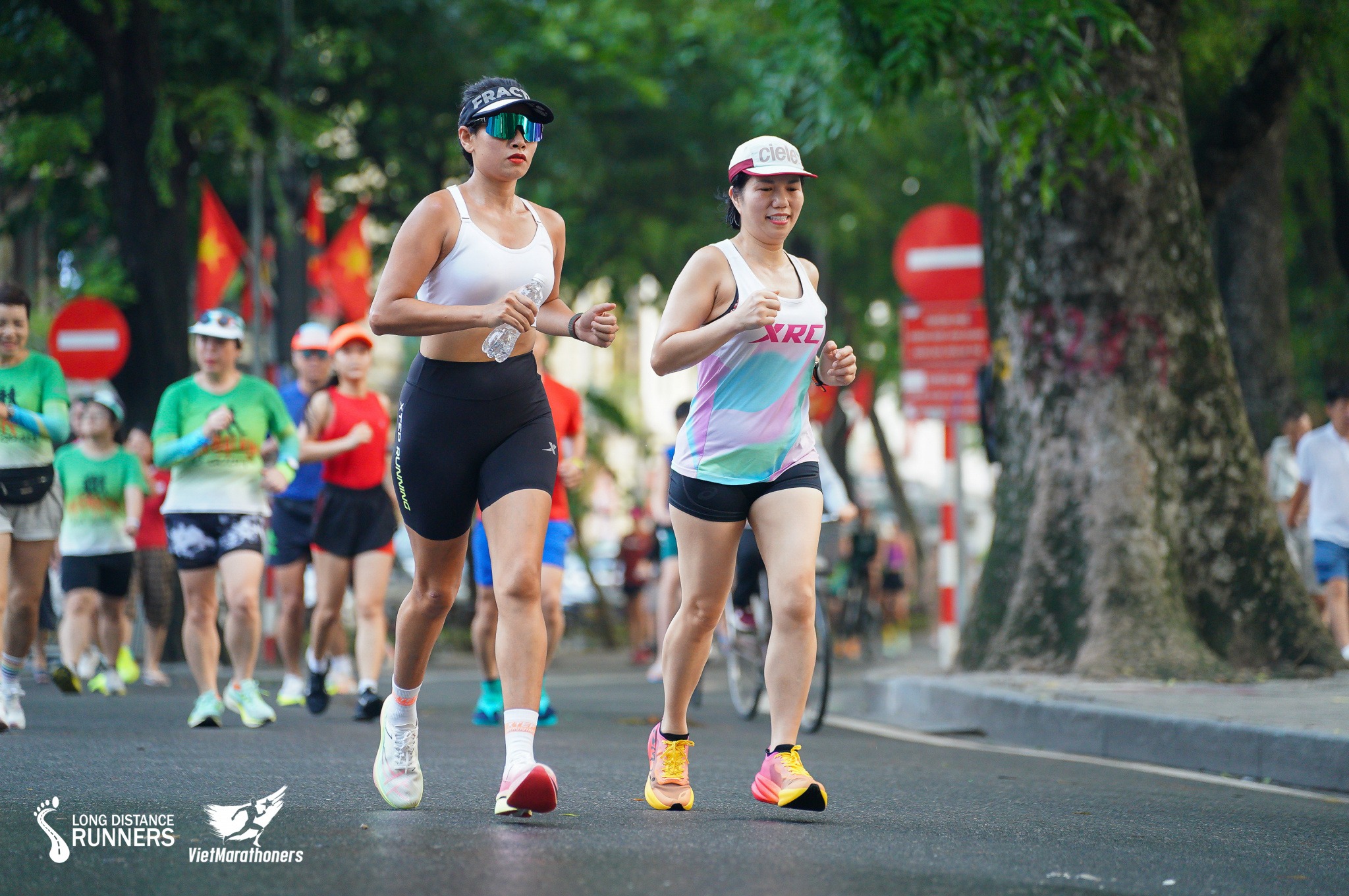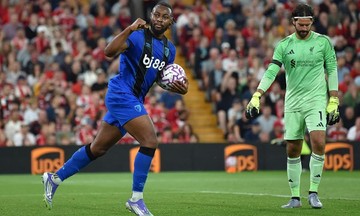Exercising in the early morning or late evening is recommended.
According to Greg McMillan, an American running coach and exercise physiologist, high temperatures and humidity reduce the body's ability to cool down through sweating, causing heart rate and body temperature to rise faster than normal. "If you don't adjust your training schedule, the risk of heat stroke and exhaustion is very high," he emphasized.
McMillan suggests that the safest time to exercise in hot weather is before 6:30 am or after 6:30 pm, when temperatures are lower and UV rays are less intense. During heatwave warnings, runners should prioritize indoor workouts or shaded areas.
 |
Runners at Hoan Kiem Lake, Hanoi in the early morning. Photo: HanoinRomeyes |
Runners at Hoan Kiem Lake, Hanoi in the early morning. Photo: HanoinRomeyes
Reduce intensity and duration of workouts.
American coach Ben Rosario, co-founder of the HOKA NAZ Elite running team, advises runners not to maintain the same training plan as in cooler weather. He recommends the following:
: Reduce training intensity by 20-30% on days with humidity above 90%.
: If the training plan includes interval runs or long runs, shorten the workout time to a maximum of 45-60 minutes and increase rest time between sets.
: Use a heat adjustment factor: For every 5 degrees Celsius above a comfortable temperature, reduce the pace by 10 to 15 seconds/km.
Pay attention to clothing and hydration.
Dr. Stacy Sims, a physiology expert in New Zealand, notes: "High humidity makes sweat evaporate less effectively, so it's harder for the body to cool down. Therefore, choosing breathable, moisture-wicking clothing and keeping skin ventilated is extremely important".
Runners should choose sportswear made of poly-synthetic or bamboo fiber, avoid cotton because it retains water, wear a light, wide-brimmed hat, use UV-blocking sunglasses, and apply SPF 50+ sunscreen.
 |
Wearing sunglasses, a hat, and breathable clothing helps runners stay comfortable during hot and humid days. Photo: Long Distance Runners |
Wearing sunglasses, a hat, and breathable clothing helps runners stay comfortable during hot and humid days. Photo: Long Distance Runners
Drink about 200-250ml of water every 30 minutes of exercise. For workouts lasting more than an hour, replenish electrolytes like sodium, potassium, and magnesium through tablets or sports drinks.
Listen to your body and recognize early signs of heat stroke.
The US Centers for Disease Control and Prevention (CDC) warns that symptoms such as dizziness, rapid heartbeat, cold, clammy skin, nausea, or headache are early signs of heat stroke.
If experiencing these signs, runners should:
: Stop exercising immediately and find a cool place. Loosen clothing.
: Apply a cold, wet towel to the neck, armpits, and groin.
: Drink cool water containing electrolytes in small sips.
: In severe cases, call emergency services.
Consider alternative exercises.
On extremely hot days, experts recommend changing the form of exercise. Runners can choose to use a treadmill or cycle indoors, or in an air-conditioned gym.
 |
Using a treadmill in an air-conditioned gym is a good alternative on hot days. Photo: Tram Anh |
Using a treadmill in an air-conditioned gym is a good alternative on hot days. Photo: Tram Anh
Swimming or water walking can also help maintain endurance without putting the body under significant heat stress. Additionally, strength training, yoga, or stretching in a room with a fan or air conditioning are safe options.
Exercising in hot and humid conditions requires listening to your body and adjusting your training plan flexibly. Coach McMillan emphasizes, "The important thing is to ensure your body gradually adapts to the environment, rather than trying to stick to a rigid plan. Being wise in choosing the time and intensity will help you maintain your fitness in the long run".
Compiled by Nhat Tao












